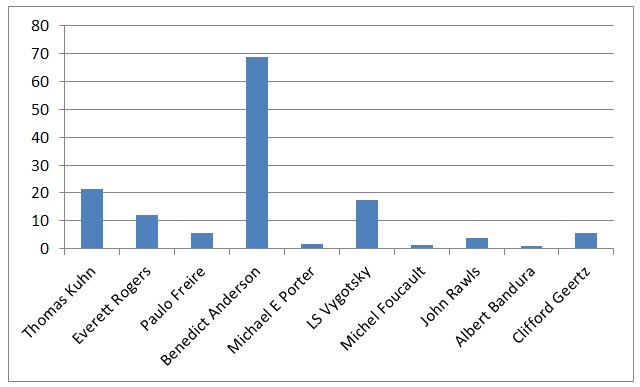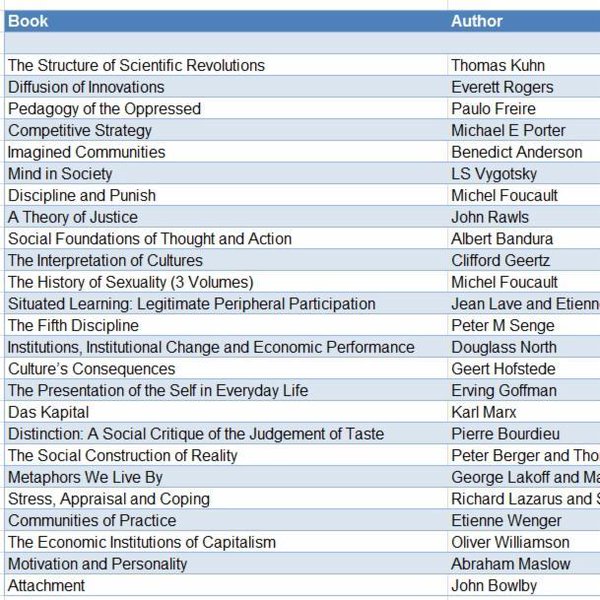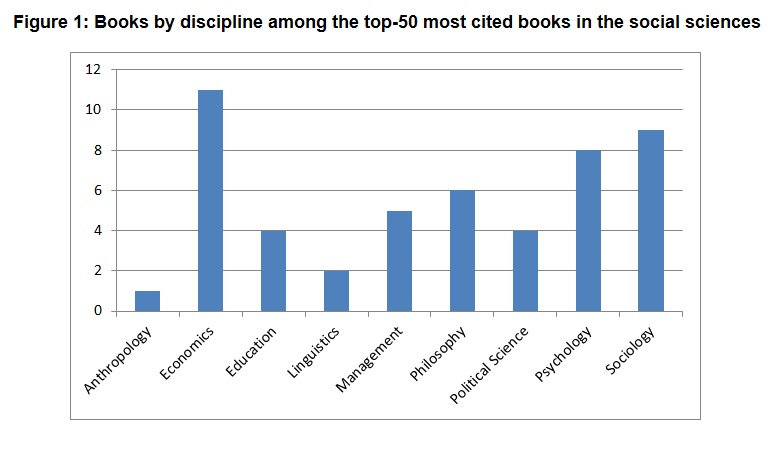Month: May 2016
Saturday assorted links
1. Peak TV? And is the future of music your narcissism?
2. Not so much intergenerational mobility in Florence over the course of six centuries. And family dynasties in the Nordics.
3. Has Russia had a good monetary policy lately?
4. The Burger King culture that is Finland. And how are Nigerians dominating Scrabble?
5. The sticky self-driving car.
6. Clowns and ponies used to cheer up grumpy, delayed airport passengers.
7. John Cochrane on overtime. Many of the economists I read seem oddly reluctant to condemn — or for that matter justify — this new Obama policy. I need clowns and ponies!
Only about one-quarter of corporate stock is owned by taxable shareholders
Only about one-quarter of U.S. corporate stock is held in taxable accounts, far less than most researchers and policymakers thought. The share has declined sharply from more than four-fifths in 1965. In a report published today in the journal Tax Notes, my Tax Policy Center colleague Lydia Austin and I found the other three-quarters of shares now are held in tax-exempt accounts such as IRAs or defined benefit/contribution plans, or by foreigners, nonprofits or others.
That is Steven M. Rosenthal, here is further information.
*A Life Beyond Boundaries*,by Benedict Anderson
That is the title of his posthumous memoir, highly recommended. It is one of the best books on the charm of studying Southeast Asia, and also a very good look at how American academia rose from mediocre to excellent in the postwar era. It is short and can be consumed in a single gulp.
Here is Andrew Batson on the book. Here is Anderson on Wikipedia; he was best known as a theorist of nationalism but he also did important work on Indonesia and Thailand.
Ratio of most-cited publication to second-most-cited publication for authors among the top-10 most cited books in the social sciences:
Why isn’t there more telemedicine?
Austin Frakt tells us:
The biggest hurdle may be state medical boards. Idaho’s medical licensing board punished a doctor for prescribing an antibiotic over the phone, fining her $10,000 and forbidding her from providing telemedicine. State laws that restrict telemedicine — for instance, requiring that patients and doctors have established in-person relationships — have drawn lawsuits charging that they illegally restrict competition. Georgia’s state medical board requires a face-to-face encounter before telemedicine can be delivered, while Ohio’s does not.
A study by Julia Adler-Milstein, an assistant professor at the School of Information and the School of Public Health, University of Michigan, found that such state laws and medical board requirements influence the extent of telemedicine use by hospitals. While 70 percent or more hospitals in Maine, South Dakota, Arkansas and Alaska use telemedicine, only 13 percent in Utah and none in Rhode Island do, for instance.
In a passionate commentary on the establishment’s hesitancy to embrace telemedicine, David Asch, a University of Pennsylvania physician, pointed out that the inconvenience of face-to-face care limits its use, but arbitrarily and invisibly. The costs of waiting and travel time and those borne by rural populations with poor access to in-person care don’t appear on the books. “The innovation that telemedicine promises is not just doing the same thing remotely,” Dr. Asch wrote, “but awakening us to the many things that we thought required face-to-face contact but actually do not.”
Here is the full NYT account.
Friday assorted links
1. What we learn from collecting lots of data on San Francisco rents. And here, both are excellent and useful pieces, basically SF is ****ed.
2. How do trees sleep? Paper here: “Quantification of Overnight Movement of Birch (Betula pendula) Branches and Foliage with Short Interval Terrestrial Laser Scanning.”
3. Review of Singapore’s driverless taxis to come. And Uber knows you are willing to pay more when your battery life is low.
4. Deirdre on public bathrooms.
5. The horror markets in everything the horror.
6. Cato vindicated, apology and also broader rethink of method is due.
New York City fact of the day
Nearly three-quarters of the existing square footage in Manhattan was built between the 1900s and 1930s, according to an analysis done by KPF, an architecture firm based in New York.
That is from the new Upshot piece “Forty Percent of the Buildings in Manhattan Could Not be Built Today.”
The Developmental Roots of Conformity Bias
Michael Tomasello reviews theories of learning–some suggest that liberalism may be unnatural:
…a consistent finding in comparative studies is that human children are much more concerned than are other great apes to copy the exact actions of others, including arbitrary gestures, conventions and rituals (Tennie et al. 2009). Indeed, this tendency is so strong…when children do not see a clear goal to an actor’s action, they imitate even more precisely than if they do see a goal…
Moreover, children quickly learn to enforce arbitrary conventions and rituals:
…young children are so concerned with conformity that they will even enforce it on others, even when they themselves are not affected and the action involved is merely an arbitrary convention. For example, if children learn that on this table we play the game this way and on that table we play it another way, if a puppet then plays the game the wrong way on the wrong table, they intervene and stop him (Rakoczy, Hamann, Warneken, & Tomasello, 2010; Rakoczy, Warneken, & Tomasello, 2008)….Interestingly, when actors violate conventional norms, 3-year-olds admonish them more often if they are in-group rather than out-group members, presumably because in-group members should know better and be more committed to how “we” do it (Schmidt, Rakoczy, & Tomasello, 2011).
The enforcement of conformity is so important for young children that 5-year-olds have more positive feelings toward a norm enforcer (even though he is acting aggressively) than they do toward someone who simply lets a norm violation go (even though he is behaving in a neutral manner; Vaish, Herrmann, Markmann, & Tomasello, 2016).
In the environment of evolutionary adaptedness (EEA) an individual could not survive outside the group of their birth and so conformity was a matter of life and death. Conform or be cast out. Conformity to arbitrary convention was not in fact arbitrary but signalled affiliation. Conformity banded groups together.
Today, however, conformity is often counter-productive. Trying to enforce the arbitrary conventions of one’s in-group impedes social cooperation on the scale that makes modernity possible. Conformity also slows the development of new ideas and new ways of doing things–the essence of growth and progress. Even though conformity is now counter-productive the desire to conform and to enforce conformity is buried deep–the atavism of social justice.
Individualism and liberalism are foundational ideas for modernity but these adult ideas battle the desire to conform in our childish hearts.
Hat tip: Rolf Degen on twitter.
*Polarized: Making Sense of a Divided America*
James E. Campbell has written an excellent book on this contested and…polarizing…topic. Here is just one of many good bits:
As they [some commentators] see it, party polarization has been asymmetrical. The Republican Party allegedly has been captured by right-wing zealots while the Democratic Party has remained a reasonable center-left party. The claim of asymmetrical party polarization is half-true and completely understandable. First, there should be no mystery to asymmetry. If the parties are very competitive, as they are, and the public is skewed to the conservative end of the ideological scale, the parties should be similarly skewed. In a center-right nation, the right-wing party should be further to the right than the left-wing party is to the left. If the two parties were equally ideological, the Democrats would be in a permanent minority. That said, the increased polarization of the parties cannot be entirely attributed to the Republican Party becoming more conservative. Before the Republicans began moving to the right, Democrats had moved further to the left. Party polarization followed the staggered nature of the realignment. In the 1970s, congressional Democrats moved significantly to the left, while there was little change in congressional Republicans. The Republican shift to the right came later and was augmented by the growth of conservatism in the public. The polarization of the parties was a two-step dance — maybe three big steps: One big step to the left and two smaller steps to the right.
There is also this:
A five- or ten-percentage-point shift in ideological preferences may seem like “small potatoes,” but a nation that is 40% moderate and 60% ideological (liberal or conservative) operates quite different politically from one that is a 50-50 split.
By the way, it is sometimes noted, or noticed, that left-leaning thinkers have become crazier lately. I think overall that is true. It may be a sign that America is switching from a center-right to a center-left nation, given Campbell’s analysis above.
Recommended, due out in June from Princeton University Press. And here is Timothy Taylor on polarization.
When does Robert Cottrell just stop reading? (from the comments)
I considered the question of when one should just stop reading, and here is Robert’s take:
I read full-time to edit The Browser, and I abandon a hundred articles for every one that I finish. I generally stop if I hit “eponymous”, or “toxic”, or “trigger warning”, or “make no mistake”. Summary labelling of anything in an article as “complex” means that the writer does not understand or cannot explain the material. I don’t often read beyond headlines that use the words “surprising”, “secret”, “really”, “not” or “… and why it matters”. Any headline ending in a question mark is a bad sign. I know writers don’t usually write their own headlines, but the headline represents a best effort to say what is useful in the article by a sympathetic person who has been paid to read it.
Robert is one of the best readers I know.
China fact of the day
In 2015, total nominal credit expansion was nearly 4 times greater than total nominal GDP expansion.
That is from Christopher Balding, more of interest at the link.
Thursday assorted links
Patents, Prizes and Subsidies
Thinking about the Solow model and the limits of capital accumulation as a force for growth leads naturally to thinking about ideas and the institutions that create incentives to produce and use new ideas. Here is Patents, Prizes and Subsidies, the latest video from our Principles of Macroeconomics course at MRU–based, of course, on our textbook, Modern Principles.
My favorite part of this video is Tyler doing a cameo as an armchair economist.
Is an imploding EU an argument for Brexit?
It’s not clear the EU is imploding, but let’s just say it were, or that it will. That still makes “remain” better than “leave.” As the implosion proceeds, the United Kingdom would end up with a rather gracious out, and one which does not drive Scotland away, once other nations would start leaving or radically paring back the terms of their participation. Along the way, “ever closer union” would not be a threat to sovereignty. Conversely, if the country votes for “leave” in June, it will be perceived as yet another domino in the cascade of anti-globalist nationalism and would bring a rather sudden shock to London as a financial center and relations across the Irelands.
Look at it this way: there is no general case for being the first rat to leave a sinking ship, if that ship has stores of food. And the United Kingdom, with its own currency and set of distinct historical traditions, can leave whenever it wants and resort to its perpetual life raft.
Option value! It’s not enough that leaving be better than staying. Since “wait and see” is an option, leaving has to be much better than staying, given the mathematics of the expected value of irreversible decisions. I just don’t see that case has been made.
Here is my earlier post on Brexit.
How does China use the QWERTY keyboard?
Chinese “input” uses the QWERTY keyboard in an entirely different manner. In China, the QWERTY keyboard is “smart,” in the sense that it makes full use of modern-day computer power to augment and accelerate the input process. First of all, the letters of the Latin alphabet are not used in the same limited way that we use them in the alphabetic world. In China, “Q” (the button) doesn’t necessarily equal “Q” (the letter). Instead, to press the buttons marked Q, W, E, R, T, Y (or otherwise) is, strictly speaking, a way to give instructions to a piece of software known as an “Input Method Editor” (IME), which runs quietly in the background on your computer, intercepts all your keystrokes, and uses them as guidelines to try and figure out which Chinese characters the user wants. Using the most popular IME around today — Sougou Pinyin — the moment I strike the letter Q, the system is off and running, trying to figure out what I want. With the first clue, the IME immediately starts showing me options or “candidates” in a pop-up menu that follows me along on screen — in this case, Chinese characters, names, or phrases whose phonetic value begins with Q, such as Qingdao or Qigong.
The moment I hit the second button — let’s say U — the IME immediately changes up its recommendations, now giving me only characters that have pronunciations starting with “Qu.” There is no set, standard way to manage this process, moreover. There are many IMEs on the market, and each IME has many customizable settings. Some IMEs don’t use phonetics at all, in fact, but instead use Latin letters to indicate certain shapes or structural properties of the Chinese characters you want. And on top of all of this, there are countless abbreviations and shortcuts you can use to speed up the process (e.g., typing “Beijing” will get you the capital of China, but so will “bjing,” “beij,” or simply “bj”). And then, of course, there is “predictive text,” which as I have shown elsewhere, was developed and popularized in China decades before it was in the West.
In other words, for the computer age the Chinese system of characters has worked out quite well, and in some ways may be superior to the Roman alphabet. The piece is Jeffrey Wasserstrom interviewing Tom Mullaney, and is of interest more generally.
What are the most cited books in the social sciences?
There is also this:
Here is the source, full text and explanation here. There is much more of interest at that final link.


